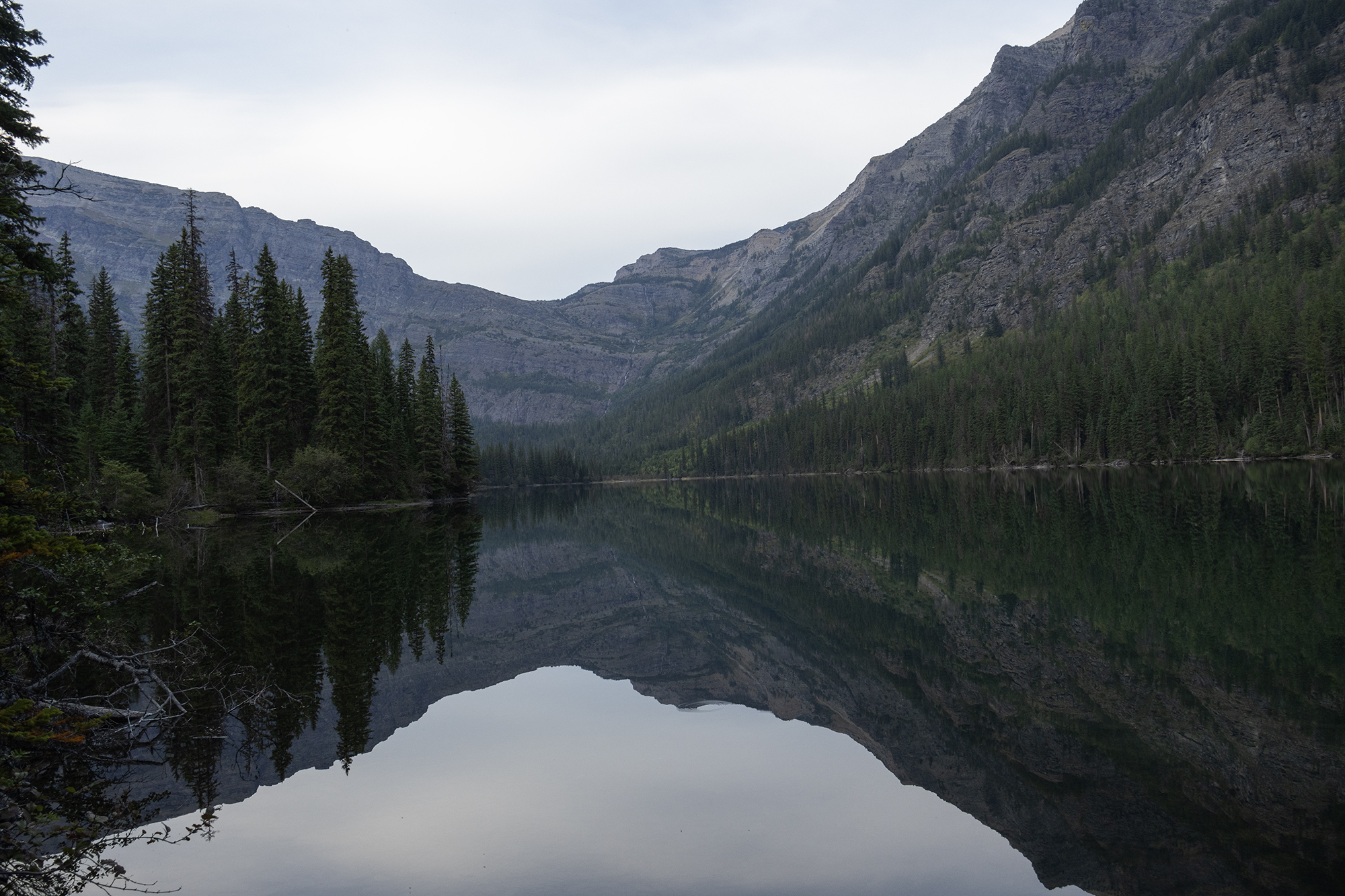Grace Lake is tucked up in the Logging Creek drainage past the long Logging Lake. Unlike Logging Lake, Grace Lake has towering mountains dropping to the edge of its shoreline and its location lends itself to more solitude.
Our assignment was to do another Mountain Goat/Bighorn Sheep survey for the Citizen Science Program. Only a few locations needed a third survey and Grace Lake was on the list. Kristen had never been to this lake and a late summer backpack sounded fun, so we signed up for it and hit the trail!
The sun was shining as we got out of our car on a warm, sunny morning. We cruised through the forest, climbing up through the trees. Logging Creek, occasionally visible below, stayed mostly hidden, although we could hear it tumbling below. After a little elevation up to the bench, we broke out into the burn area. Logging Creek was visible and we could see up to the head of the valley with the rocky summits of the Livingston Range loomed ahead.
As we moved further up the drainage, the summer’s flowers had turned to berries. Hawthorne, mountain ash, redosier dogwood, bunchberry dogwood, and oregon grape, just to name a few, were everywhere with their purples, oranges, and red fruits. We heard a bit of crashing and saw a Hawthorne bush pop up. A bit of patience and we spied a black bear moseying through the undergrowth. Ample scat along the trail gave further evidence of its food of choice.
It didn’t take long to get to the non-visible foot of the lake. The first five miles doesn’t seem to take that long. The next six miles along the length of Logging Lake does seem to drag on a bit. Brief interludes of looking at the lake are welcome as most of the hike is through the trees. This time of year doesn’t have much in the way of bird song or wildflowers and the trail does seem to inexplicably go up and down Logging Ridge, but on the bright side, there are little in the way of insects.
After a brief stop at one of the views of the lake for lunch, we passed the spur trail for the Adair campground and came to the head of the lake. We spied a pair of Bald Eagles and Common Loons. A juvenile Sharp-shinned Hawk flew along the trail, giving us a couple of looks at this small, forest hawk.
We arrived at the patrol cabin at the head of the lake, admiring the Bald Eagle feather stabbed into the larch ball (a ball of larch needles formed along the shores of the lake as a result of the trees losing their needles into the water and the lapping action of the lake, tumbling the needles into balls as large as 6″ across!)
The trail taking off to Grace Lake is a sneaky one that starts by the back corner of the cabin and promptly climbs up into the forest. The forest transitions into a wetter forest of spruce and subalpine fir with moss hanging from the branches. As we went further in, the mountains seemed to close in. Huckleberries, absent from the rest of the hike, began to appear on the branches as we got closer to the lake.
After a brief 1.4 miles of some up and down, we dropped down to the shores of Grace Lake. This quaint campsite is right along the shores of the lake. We snagged the site that is closest to the lake and had one other person arrive at the campground. We hopped into the water for a cool swim, made dinner, and did a goat/sheep survey, spying two with the help of our new friend.
The next morning we woke to an overcast sky, had breakfast and, once again, enjoyed the stunning views of the rocky peaks jutting up from the water. Due to the location of the campground, you really can only see the mountains to the east, but Mt Geduhn and a bit of Trapper Peak are stunning! We glassed the mountains one more time, finding one additional goat, then packed up and headed out.





Leave a Reply